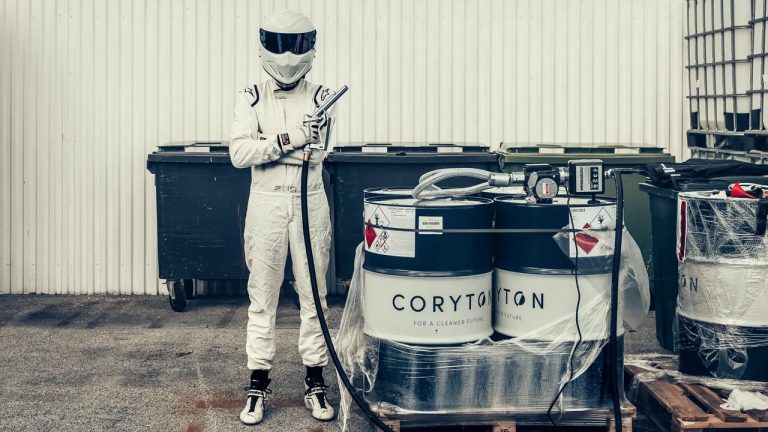
Time to explore 2024's most popular watch word: 'sustainability'
Published: 04 Sep 2024
What are biofuels?
In short, they're liquid fuels made from renewable resources. 'Bio' is a prefix that makes a lot of stuff very cool: biosphere, bionic (anything), biodiversity. By the dictionary definition, it means 'life' derived from Greek. Biofuels by this definition are fuels derived from organic matter, ie crops.
What kinds of crops make biofuels?
There are two key types of biofuel: bioalcohol (bioethanol, biobutanol, propanol) and biodiesel.
Advertisement – Page continues below
They're usually made from corn, cottonseed, rapeseed, maize, nettlespurge (jatropha), soybeans, sugar beet, sugarcane, sunflowers and wheat, to name, er, pretty much all of them. Sugar- and starch-based crops make bioalcohol, where oils and animal fats can be used to produce biodiesel.
Hold up, why is there so much fuss about biofuels when coal, oil and natural gas are, naturally occurring too?
True, these fuels are naturally occurring, but they also take a long time to form and there isn't an infinite supply. Those crops take far less time to grow, get farmed and be turned into biofuels – again, and again, and again… you get the picture. Sustainability, innit.
You'll also know by now that when burned, coal, oil and natural gas emit harmful gases, primarily carbon dioxide, and pollutants. They interfere with the earth's natural atmosphere and create the greenhouse effect. In turn, that's causing the earth to warm more quickly.
Biofuels, on the other hand, are considered carbon neutral: the plants grown to make them swallow up the carbon dioxide that's produced again when they're burned as fuel. Plus, they emit fewer greenhouse gases and pollutants when set on fire than the fossil-based fuels.
Advertisement – Page continues below
Of course, reducing reliance on oil and natural gas has bigger geo-political implications for governments looking to establish greater energy security, too.
Good point. Moving on, why grow plants for fuel when some folks are dying?
You wouldn't be the first to ask. There's a longstanding debate on the subject of diverting agricultural land to grow food to burn. In defense of biofuels, many are produced from waste feedstock – rather than the main crop.
Ok, next question. Can I put my food waste and veggie oil remnants into my petrol car then?
You can't. Well, you can…but it's going to make one helluva mess to clean out.
It is the case that cooking oil can be added to diesel cars in small quantities – ie an apocalyptic emergency – without doing too much damage. However, the viscosity of veggie oil is different to that of diesel and can properly clog your engine. There's a process of 'transesterification' (try saying quickly). That helps separate out the glycerol from the oil, so it can be removed and thus, no more clogging.
Thank you for subscribing to our newsletter. Look out for your regular round-up of news, reviews and offers in your inbox.
Get all the latest news, reviews and exclusives, direct to your inbox.
Increasing numbers of commercial enterprises which use vast quantities of oils in their products (fast-food restaurants, we're looking at you) sell their used oils to companies that transesterify vats of the stuff to sell on as HVO, or hydrotreated vegetable oil. Neat, planet-friendly policies, for the win.
These biofuels sound all good. What is the downside?
The cost. Currently biofuels, despite being faster, aren't cheap to produce because in the same way oil from the earth needs to be refined into its components, the biomass needs to be broken down into usable components. Boffins around the world are working on ways of tackling this current challenge, involving pretreatment of the organic matter.
Right now though, biofuel prices are anything from 70 per cent to an eye-watering 130 per cent more than petrol and diesel on the wholesale market, according to the European Federation for Transport and Environment's 2022 data. At the consumer end, HVO in the UK is roughly 10-15 per cent more expensive per liter than regular diesel.
How do I get involved in the biofuel movement?
Technically, you probably already have. If you drive a modern petrol car, you'll likely be refueling with E10. That's the 10 per cent petrol/ethanol mix that came onto the market a few years back. As biofuel becomes cheaper to produce, that ratio will probably shift more dramatically in favor of ethanol and there'll be a gradual reduction of petroleum content.
If you're a diesel driver, you could always switch to HVO. It'll cost you more but you'll be doing your bit for Mother Earth and you won't have to convert or modify your car in any way.
When will we be using biofuels at scale?
According to the International Energy Agency (IEA), there's just over 110 billion liters of ethanol, over 50bn liters of biodiesel, almost 20bn liters of renewable diesel and almost two billion liters of biojet (used by aircraft) in use today. That's a total of 172bn liters, a number that's expected to climb to 200 billion liters by 2028.
Current demand is focused in markets like Brazil, Indonesia and India, so if Europe and North America can cop on, and the maths makes sense to drivers in these regions, the demand will spike.
